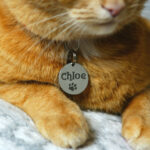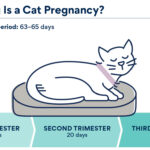Just like humans, cats possess a rich and varied vocabulary. Scientific studies have identified up to 21 distinct feline vocalizations, and it’s likely their full repertoire is even more extensive. Cats utilize these sounds to construct intricate expressions, akin to human sentences, communicating a wide range of needs and emotions.
While some breeds, like Maine Coons, are known for their quieter nature compared to more talkative Siamese cats, understanding cat sounds, alongside interpreting their body language, is crucial for pet owners. This knowledge empowers you to better grasp your feline companion’s desires, moods, and intentions. Let’s delve into the world of common cat noises and decipher their meanings, focusing on key aspects of Cat Sounding.
1. The Classic Meow: More Than Just a “Meow”
The meow is perhaps the most iconic cat sound, a distinctive and typically high-pitched call. Kittens meow to get their mother’s attention, but adult cats primarily use meowing as a way to communicate with humans.
So, what does cat meowing mean? Cats meow for a multitude of reasons, including:
- Greetings: A friendly “hello” to their favorite humans.
- Play Solicitation: Inviting you to engage in a fun play session.
- Expressing Emotions: Showing excitement, frustration, or even a bit of impatience.
- Requesting Needs: Asking for attention, food, or access to a desired location, like coming indoors or entering a specific room.
However, a cat meow can also signal less positive emotions such as anxiety, boredom, or frustration. A lower-pitched, drawn-out meow, especially if it’s a change from your cat’s usual cat sounding, might even indicate illness. If you notice your cat meowing excessively or if their meows sound different, consulting your veterinarian is advisable.
2. Purring: Decoding the Rumble
The purr is a continuous, low-frequency, rhythmic vibration produced during breathing. While often associated with contentment and pleasure, purring in cat sounding can also indicate a cat is feeling scared, unwell, or experiencing pain.
Interpreting a purr requires considering the context of the cat’s body language. If a purring cat exhibits signs like flattened ears, dilated pupils, tense muscles, or unusual behavior, the purr might signify discomfort or unhappiness rather than joy. Observing the overall cat sounding and body cues is key to accurate interpretation.
3. Chirping: The Bird-Like Cat Sound
A chirp is a brief, high-pitched cat sound remarkably similar to a bird’s chirp. A series of chirps is often referred to as chirrups. Mother cats initially use chirps as a contact call to their kittens. Adult cats may chirp to attract attention or to signal their location to other cats or humans.
A common scenario for chirping is when a cat spots potential prey, like birds or squirrels outside a window, that they can’t reach. In this context, the chirp can express excitement mixed with a touch of frustration. This specific cat sounding is often accompanied by focused gazing and tail twitching.
4. Trilling: A Friendly Feline Greeting
A trill is a soft, high-pitched cat sound that resembles a purr but with a lighter tone. Cats often trill as a friendly greeting and to express gratitude to their human companions, perhaps after receiving a treat or a petting session. It’s considered one of the most common amicable sounds in a cat’s vocal repertoire.
5. Chattering and Twittering: The Silent Hunter’s Sound
Chattering, sometimes called twittering, is a unique cat sounding characterized by a low, smacking sound produced by the rhythmic clicking of the jaws. It’s usually voiceless, meaning it’s made without engaging the vocal cords. Similar to chirping, chattering often occurs when a cat observes unattainable prey. This cat sounding seems to reflect the cat’s hunting instincts and anticipation, even when the hunt is impossible.
6. Growling and Hissing: Warning Signals in Cat Sounds
A growl is a low, rumbling cat sound used as a warning to deter a perceived threat. It can be directed at humans, other cats, or other animals. Growling clearly indicates that a cat feels threatened, scared, or is on the verge of aggression. The intensity of this cat sounding often escalates as the cat’s fear increases.
A hiss is a drawn-out, forceful cat sound produced by rapidly exhaling air from the mouth. A hissing cat typically displays an open mouth and exposed teeth. Hissing is often an involuntary reaction when a cat is startled by a perceived danger or enemy. Like growling, hissing serves as a warning signal. Both of these cat sounding types are frequently accompanied by fear-related body language, such as an arched back, flattened ears, a twitching tail, and puffed-up fur – the classic defensive cat posture.
When a cat growls or hisses, they are emphatically communicating their discomfort and unwillingness to engage. If a cat directs these cat sounding warnings at you, it’s crucial to back away and respect their space. If your cat hisses at something else, like another animal or object, attempt to remove the perceived threat to alleviate their stress.
It’s important to never attempt to pet or pick up a growling or hissing cat, as this can escalate their fear and lead to defensive aggression.
7. Spitting: An Intense Hiss
A spit is a sudden, sharp, explosive burst of cat sounding, often accompanied by a quick, striking motion with the paw. The spit is essentially a more intense form of a hiss. Like hissing, it’s an involuntary reaction to a perceived threat or enemy, indicating a high level of fear or agitation.
8. Yowling and Howling: Sounds of Distress
Often described as louder, more prolonged meows, yowls are drawn-out cat sounds. Howls are similar to yowls but typically shorter in duration.
Yowling and howling are generally indicators of distress in cat sounding. This distress can stem from physical pain or illness, or emotional factors like worry, frustration, boredom, or confinement. Older cats may yowl if they are experiencing cognitive dysfunction syndrome, or dementia. If a cat yowls specifically when their family is away, it might be a sign of separation anxiety.
Cats may also howl or yowl as a territorial warning to other cats, preventing them from intruding on their space. Unneutered cats may also use these cat sounding types as part of mating behaviors.
9. Caterwauling: The Mating Call
A caterwaul is a loud, lengthy, wailing cat sound made by unspayed female cats to attract potential mates when they are in heat. When directed towards human family members, a caterwaul can express pain, discomfort, fear, or a desire for attention. Similar to yowling, caterwauling can also be a symptom of cognitive decline in senior cats.
Understanding the nuances of cat sounding is crucial for responsible cat ownership. While different types of cat vocalizations convey different meanings, a general guideline is that any significant change in a cat’s vocalization—in frequency, intensity, duration, or pitch—should prompt a veterinary visit to rule out underlying pain, illness, or anxiety. In some cases, medications to manage anxiety or pain might be necessary to address the root cause of altered cat sounding.
Featured Image: iStock/Petra Richli


